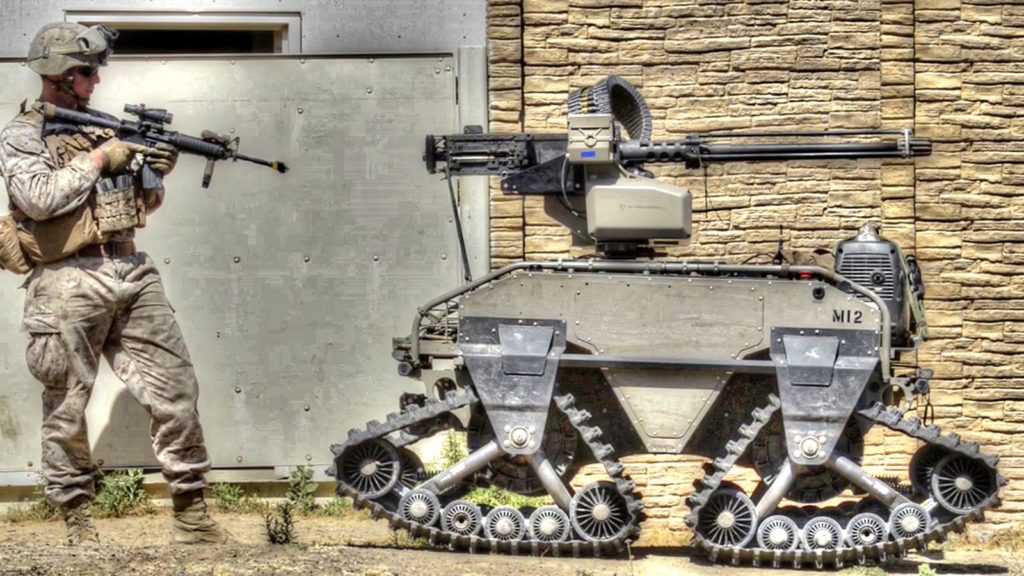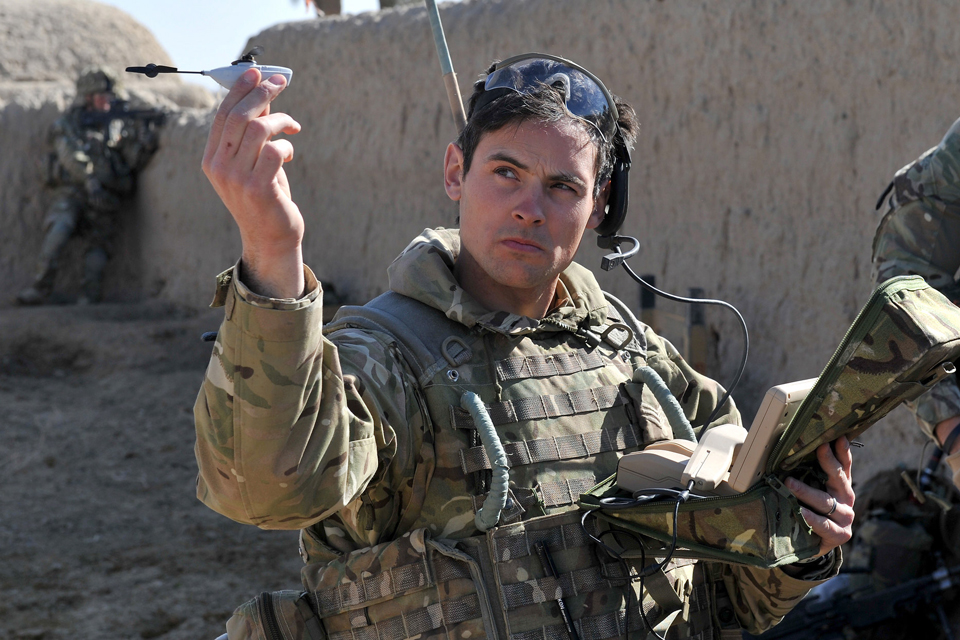
Why the Pentagon hoped to recruit Apple to help wage the “next generation: of warfare.
Pentagon Looks to Use Afghanistan as Proving Ground for New Tech
(August 12, 2019) — Hopes for peace in Afghanistan continue to get delayed, but with a deal seemly always just on the horizon, the Pentagon is finding new things to do in Afghanistan. Not trying to win the war, because that ship sailed long ago.
But 18 years into the war, the Pentagon has found Afghanistan as a nice proving ground for a lot of different new military technology, hoping to show that new artificial intelligence efforts and cloud computing can make information-sharing in an occupation more efficient.
The Afghan War has gone really badly, of course, and better than what they had isn’t a tall order. In addition to the computer upgrades they’re getting, US Army forces are also being given pocket-sized drones to deploy for the first time.
The drones, like the AI, aren’t meant as a serious bid to turn around the long lost and almost-over war. Rather, they’re to allow the Pentagon to say these things have been tested in war conditions, for their funding going forward and use in America’s presumptive future wars.

DOD Looks to Use Afghanistan as Cloud, AI Proving Ground
Rachel S. Cohen / Air Force Magazine
(August 12, 2019) — Afghanistan will serve as a proving ground for the Pentagon’s future cloud infrastructure known as JEDI, as artificial-intelligence algorithms are introduced into America’s almost 18-year-old war, Defense Department officials suggested in a recent media roundtable.
USAF Lt. Gen. Jack Shanahan, the director of DOD’s Joint Artificial Intelligence Center, told reporters Aug. 9 that the “Project Maven” initiative is developing an AI-enabled “smart system” to fuse military intelligence with US Special Operations Command operations data. Project Maven began as an effort to catalog the information collected by remotely piloted aircraft sensors to lessen the workload for intelligence analysts.
“The pace of operations in Afghanistan is … higher than it’s been in an awful long time right now, and they were giving me very concrete examples of downrange using these capabilities,” Shanahan said of AI-enabled systems. “But the more they’re using them, the more data they need, the more data they’re actually pulling off the battlefield.”
The Joint Enterprise Defense Infrastructure cloud is intended to solve the problem of gleaning too much data with no common place to put it. Project Maven and the JAIC’s AI-centered efforts will be among the first to migrate to the JEDI cloud. If a task force in one part of Afghanistan has discovered important new information, the cloud can hold it for forces elsewhere in the country to use, Shanahan said.
Someone still has to scrub military data and feed it into an AI algorithm so the system can learn, which is time-consuming, he added.
Pentagon Chief Information Officer Dana Deasy said he’ll head to Afghanistan to spend time with troops and see firsthand the impact of “siloed data,” or information that is kept in separate systems and clouds instead of being accessible to all with the right clearance. The Defense Department already spends more than $500 million a year on multiple other military clouds that are expected to plug into JEDI.
“There are questions of, ‘cloud A is not interoperable with cloud B—what does it take to make that happen?’” Shanahan noted. “I think we’re seeing real tangible examples of that playing out in Afghanistan right now, and that’s in a fight that we’re largely calling counter-terrorism, counter-insurgency. Imagine the speed of operations in a fight in the Pacific, where you just do not have time to figure out, ‘how do I get my data, clean my data, move it from point A to point B?’”
He envisions a time when troops in Afghanistan can use and create their own applications, built to work with the enterprise cloud, to access information from combat outposts across the country.
Their dig into how JEDI and other efforts can assist military personnel in Afghanistan comes as Defense Secretary Mark Esper gets a crash course in the overall purpose of the program. His deep dive follows remarks by President Donald Trump that he would ask officials to review the effort amid claims that the bidders’ proposals are being unfairly judged.
JEDI, which Amazon and Microsoft are still in the running to provide, will run alongside DOD’s other cloud infrastructure efforts. Deasy said the winner will receive a $1 million, two-year award with possible contract extensions and spinoff workloads that could be worth up to $10 billion over 10 years.
A contract award is now slated for this fall at the earliest because source-selection work was put on hold during a failed bid protest by Oracle. Those considerations will take “a number of weeks to complete,” Deasy said.

Hand-sized mini-drones will help US troops search for targets.
Army Brigade Uses Mini-drones for First Time in Afghanistan
Phillip Walter Wellman / Stars and Stripes
KABUL, Afghanistan (August 12, 2019) — Members of the first Army infantry brigade to be issued pocket-sized drones are putting the devices to work in southern Afghanistan.
Paratroopers from the 3rd Brigade Combat Team, 82nd Airborne Division, used the Black Hornet Personal Reconnaissance System last week to support a foot patrol in Kandahar province, a statement by the division said.
Army photos of the patrol Friday show troops deploying at least one drone, which resembles a miniature helicopter, during a counterterrorism mission.
“The Black Hornet provided overhead surveillance for the patrol as it gauged security in the region and spoke to local Afghans about their concerns,” the statement said, adding that paratroopers “routinely employ the system” to reduce combat risks.
The 3rd Brigade Combat soldiers were issued the Black Hornets in the spring and deployed to Afghanistan last month.
The hand-held devices, which provide near real-time video, are eventually expected to be issued to every squad in the Army, the service said in a 2018 statement.
The drones weigh less than two ounces, are nearly silent and have a flight time of up to 25 minutes, according to FLIR, the Oregon-based manufacturer.
The 3rd Brigade Combat Team, out of Fort Bragg, N.C., deployed to Kandahar province in Afghanistan’s south to replace the 2nd Brigade Combat Team, 10th Mountain Division, based at Fort Drum, N.Y.
Like its predecessor, the 3rd Brigade Combat Team supports the dual U.S. mission — a bilateral counterterrorism effort with the Afghans and a NATO-led effort to build up and support Afghan security forces.
Two paratroopers of the 3rd Brigade died from combat-related injuries just weeks after arriving in the country.
Spc. Michael Nance, 24, and Pfc. Brandon Kreischer, 20, were killed in an apparent insider attack on July 29. Both were assigned to 1st Battalion, 505th Parachute Infantry Regiment.
Posted in accordance with Title 17, Section 107, US Code, for noncommercial, educational purposes.